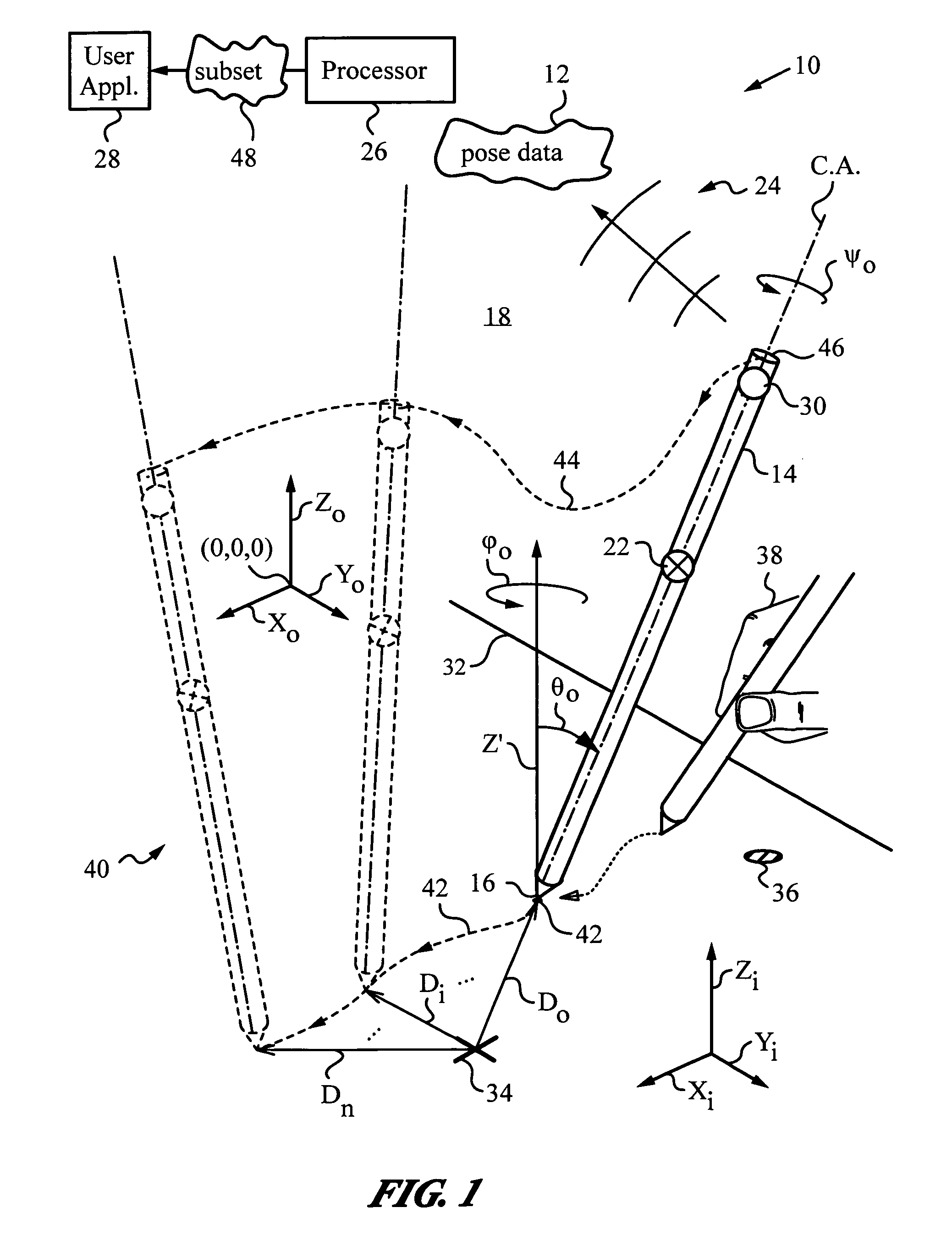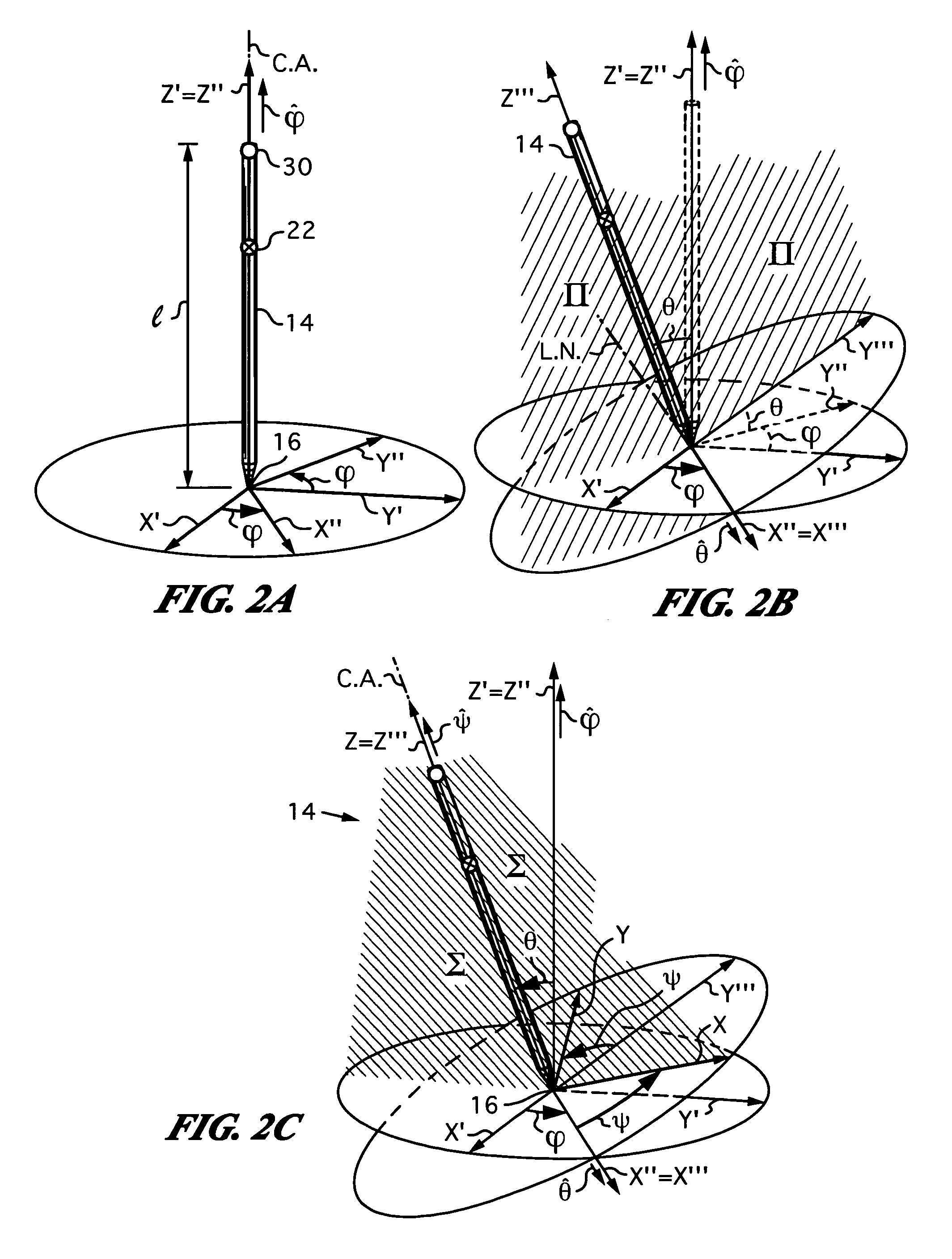Apparatus and method for determining an absolute pose of a manipulated object in a real three-dimensional environment with invariant features
a technology of invariant features and manipulated objects, applied in the field of determining the absolute pose of manipulated objects in a real three-dimensional environment with invariant features, can solve the problems of not having a sufficiently robust and rapid absolute pose determination system, many do not even provide absolute pose determination, and it is not possible to achieve one-to-one motion mapping between space and cyberspace. , the effect of high optical contras
- Summary
- Abstract
- Description
- Claims
- Application Information
AI Technical Summary
Benefits of technology
Problems solved by technology
Method used
Image
Examples
Embodiment Construction
[0069]To appreciate the basic aspects of the present invention, we initially turn to a simple version of an apparatus 10 in accordance with the invention, as shown in FIG. 1. Apparatus 10 has a manipulated object 14 whose motion 40 in a real three-dimensional environment 18 is expressed by absolute pose data 12. Apparatus 10 processes absolute pose data 12 that describe the absolute pose of manipulated object 14 at a number of measurement times ti. Thus, successive pose data 12 collected at the chosen measurement times describe the motion that manipulated object 14 executes or is made to execute by a user 38.
[0070]Manipulated object 14 is any object that is moved either directly or indirectly by a user 38 and whose pose when object 14 is stationary or in motion yields useful absolute pose data 12. For example, manipulated object 14 is a pointer, a wand, a remote control, a three-dimensional mouse, a game control, a gaming object, a jotting implement, a surgical implement, a three-di...
PUM
 Login to View More
Login to View More Abstract
Description
Claims
Application Information
 Login to View More
Login to View More - R&D
- Intellectual Property
- Life Sciences
- Materials
- Tech Scout
- Unparalleled Data Quality
- Higher Quality Content
- 60% Fewer Hallucinations
Browse by: Latest US Patents, China's latest patents, Technical Efficacy Thesaurus, Application Domain, Technology Topic, Popular Technical Reports.
© 2025 PatSnap. All rights reserved.Legal|Privacy policy|Modern Slavery Act Transparency Statement|Sitemap|About US| Contact US: help@patsnap.com



